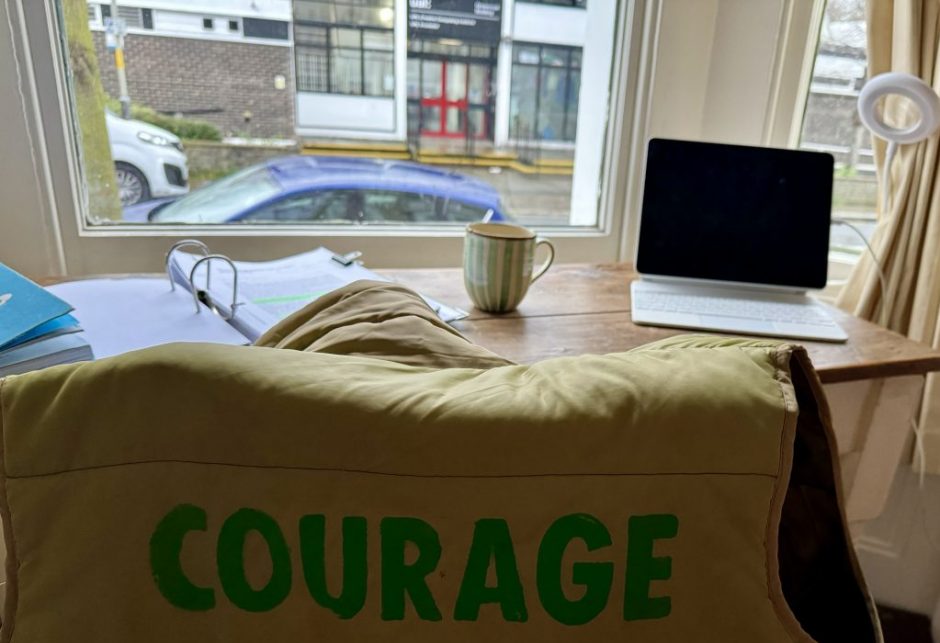Feeling very dispondant, overwhelmed by the sheer amount of intersectional possibilities… I was inspired back by 2 things… the humility of UAL statement on Palestine acknowledging that they didn’t have all the answers right now but were doing their best to communicate with the necessary partners to assist them with their decision making.




And secondly
Building Inclusive pedagogies –
pushing beyond the comfort zone: self and others.
MA/PG Cert Academic Practice: Cross programme session: 2-4pm, 15th May 2024
Gurnam Singh, Visiting Fellow in Race and Education, UAL
”I can live with theatre I think… not lecture
Hello… you got me there….
flipped classroom… as old as humanity
contradictory narratives…. Cutbacks FEAR
Universal design
he term pedagogy has its roots in Greek ‘pedagogeu’ literally meaning child (Paedos) and lead (Ago) i.e. to lead the child. More generally the term the concept refers to science and art of education i.e. of teaching and instruction
child development and cognition (Piaget, 1926,
they must engage in critical reflection on their experiences, which in turn leads to a perspective transformation”• (Mezirow, J. (1991). Transformative Dimensions of Adult Learning. San Francisco, CA: Jossey-Bass.)
disruptive space
he term critical pedagogy embraces an approach to learning that radically challenges the traditional idea that learners should behave like sponges and the teachers should the knowledge. • Critical pedagogy, as Ira Shor (1992) in his book, Empowering Education: Critical Teaching for Social Change, suggests is education that teaches to question the answers rather than answer the questions through a dialogical process of questioning, participants break through the taken-for-grantedness of everyday life to expose contradictory relations of power and disempowerment, privilege and disadvantage, prosperity and poverty. From a more critical consciousness, dialogue focuses on what can be done, and collectively action is taken to bring about change.
Conscientisation• This was essentially Freire’s method of teaching.• It related specifically to the condition of alienation that was induced by the ideological apparatus of (capitalist) society.• It represents a kind of awakening of the self and in this sense has crossovers with some religious ideas around false consciousness.• However, for Freire, to be conscious is not to enter some kind of magical spiritual realm, but to realize truly realize the material dimensions of life and the processes that turn human beings from subjects into objects.• Conscientisation, in this sense, seeks to reverse this process of objectification, or commodification, if you like.• It is the active participation of the subject in a process of self transformation.• Magical consciousness – mystification of existence, fatalism of the soul – thinks just happen!• Naive consciousness – accepts the world is made but rejects the possibility of remaking the work, arrogance of the soul – things arn’tgreat but get on with life!• Critical consciousness – realizes the possibility of possibility and sets about changing history – things don’t have to be as they are!
“Increasingly, we live “in-between” cultural differences where our aesthetic judgment and ethical values are derived from those boundaries between languages, territories, and communities that, strictly speaking, belong to no one cultural or national tradition ─ they are social values that are continually being translated and transformed in the process of global contact and communication and have no pure origin outside of it.” Bhabha, Homi. K. (2002). Afterword: A Personal Response. in Linda Hutcheon and Mario Valdés (eds), Rethinking Literary History. Oxford University P
Cultural Humility• Recognition navigating culture is a complex; we actually do it all the time, but not always that well – competence is an aspiration. • Culture is not a private posession, or an obstacle to navigate, but as a pervasive and complex set of ‘in-between’ forces that shape all our relationships. • Recognises the lasting trauma resulting from European colonialism and cultural dominance and displays skills to sensitively engage in ways that promotes healing, understanding and learning, informed by the humility of ‘non-knowing’, • This means generating safe collective spaces to allow different and conflicting viewpoints, risk taking, freedom to explore and co-creation.Reference: Singh, G (2021) From Cultural Dominance to Cultural Humility. July 2021. https://drive.google.com/file/d/1iiKZV2N_AudzuPyOLlFVTAOliXyg- 18OF9/view?usp=sharing
devastated i lost connection in the last 10 minutes and couldn’t ask questions that had bubbled away. Or did i get the opportunity to say Thank you… that session rang my BELL and got me HOOKsed
